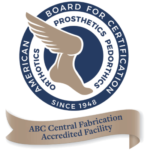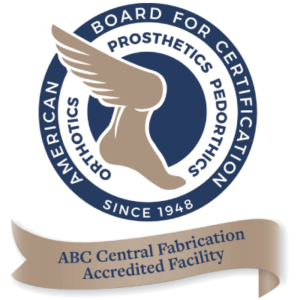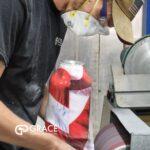What kind of prosthetics are Most Commonly Made for Patients?
Prosthetic fabrication and design are needed for a wide array of injuries and health issues. Doctors and specialists are instrumental in making this as smooth a transition as possible.
Grace Prosthetic Fabrication provides many different prosthetics for all types of patients. Today, we’re going to discuss the most common prosthetics that we design. We’ll also talk about some basic information about how they operate and the components involved.
Most Common Prosthetics Made for Patients
Whether a patient’s limb has been amputated due to a physical injury or health complication, the prosthetic fabrication and design techniques are the same. Our facility can take care of several different types of limb replacements. Utilizing 3D printing and other advanced techniques to create sockets for the new limb.
Here are the most common prosthetic sockets that we’re tasked with making for patients:
- Above Knee — Many amputations involve the need for an above knee prosthetic. These can be personalized for a patient’s needs.
- Below Knee — Patients can receive personalized templates that can be downloaded and printed.
- Upper Extremity — Upper extremity prosthetics can also be personalized in a variety of colors and patterns.
- Specialized — In some situations, patients need specialized prosthetics. These can use either older design techniques or newer technology principles.
Three Main Components of a Prosthetic Limb
Each prosthetic limb is designed and fitted to a patient’s requirements, but they all share similarities.
Here are the three main components that make up every prosthetic:
- Pylon – The pylon is the limb’s internal frame, also called the skeleton. It’s constructed of light carbon fiber and provides structural support. It can be covered by a foam material that’s designed to match skin colors.
- Socket – The prosthetic socket fits onto the end of your actual limb. These are customized to ensure that it fits at all times, which avoids irritation or damage to the skin. To fit properly, a patient wears a layer of prosthetic socks.
- Suspension – The suspension system of a prosthetic limb will keep the limb attached to your patient’s body with the use of mechanics. Some are applied using straps, but most use suction. For a snug fit between the residual and prosthetic limbs, the suspension system creates an airtight seal.
Facts About 3D Printing for Socket Fabrication
Grace Prosthetics has always stayed on the cutting edge of technology for fabrication. In recent years, we’ve upped our 3D printing technology to provide doctors and their patients with the very best solutions.
- Digital File – Our process begins by creating a digital image of the residual limb, which we’ll use to design the digital model.
- Digital Model – From the residual limb model, we create a digital model of the socket. We can duplicate these with no additional costs or resources.
- Tweaks and Changes – Before printing the socket, we can make any necessary tweaks to ensure accuracy and functionality.
- File Storage – Since 3D printing uses digital files for fabrication, there aren’t any costs for storing molds in a large facility.
Contact Grace Prosthetics for Prosthetic Fabrication
Grace Prosthetic Fabrication is the industry leader in prosthetic fabrication and design. If you have any questions about the prosthetics or would like to set up a consultation, give us a call at (800) 940-5347 today.






